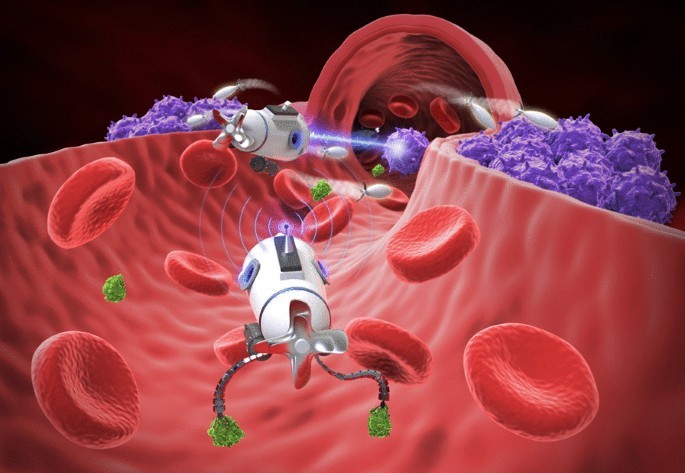Renjith Vijayakumar SelvaraniPersonalized Precision: Nanobots Usher in a New Era of Medical Intervention

Nanobots Usher in a New Era of Medical Intervention
Imagine tiny robots, smaller than a single cell, navigating your bloodstream, identifying diseased tissue, and delivering precise treatments directly to the source. This futuristic vision of personalized medicine might not be as far off as it seems, thanks to the burgeoning field of nanobots.
These microscopic machines, designed with specific functions, hold immense potential for revolutionizing healthcare. One particularly exciting application lies in clearing arterial and venous blockages, a significant cause of cardiovascular diseases. This article delves into the fascinating world of nanobots and explores how they, guided by external magnetic fields, could become microscopic surgeons, clearing plaque deposits and potentially saving lives.
The Personalized Powerhouse:
Personalized medicine tailors treatments to individual patients based on their unique genetic and biological makeup. Nanobots perfectly align with this philosophy, offering unparalleled precision. Imagine these miniscule machines equipped with sensors that can identify specific biomarkers associated with plaque buildup. Once identified, the nanobots could release targeted drugs or enzymes directly at the blockage site, minimizing harm to healthy tissue. This targeted approach could significantly improve treatment efficacy and reduce side effects associated with conventional medications.
The Actuation Advantage:
But how do these microscopic marvels navigate within the body and reach their designated targets? Enter the realm of actuation. Imagine tiny motors or propellers embedded within the nanobots, allowing them to propel themselves through the bloodstream. However, for more precise control and maneuverability, scientists are exploring the exciting potential of magnetic actuation. By applying external magnetic fields, doctors could guide the nanobots with unparalleled accuracy, directing them towards specific blockages within arteries and veins. This targeted approach minimizes the risk of unintended interactions with healthy tissue, further enhancing the safety and efficacy of the treatment.
Clearing the Path: Nanobots vs. Plaque
Now, let's get down to the nitty-gritty: how exactly might nanobots clear plaque deposits? One approach involves equipping them with microscopic tools similar to miniaturized drills or lasers. These tools, activated by the magnetic field, could physically break down the plaque, restoring blood flow. Another strategy utilizes enzymes attached to the nanobots. These enzymes could act like biological Pac-Mans, dissolving the plaque buildup in a targeted manner.
The Road Ahead: Challenges and Opportunities
While the potential of nanobots for personalized medicine is undeniable, significant challenges remain. Developing biocompatible and biodegradable materials for these microscopic machines is crucial, as is ensuring their safe and effective integration within the body. Additionally, navigating the complex ethical and regulatory landscape surrounding this emerging technology is essential.
Despite the hurdles, the potential rewards are immense. Nanobots offer the promise of early disease detection, targeted interventions, and personalized treatments, revolutionizing healthcare as we know it. The journey towards this microscopic medical marvel is long, but with continued research and development, nanobots might just become the key to unlocking a new era of personalized medicine, where prevention and precise intervention reign supreme.


AUTHOR
: March 9, 2024 at 07:39 am
Scientific Officer